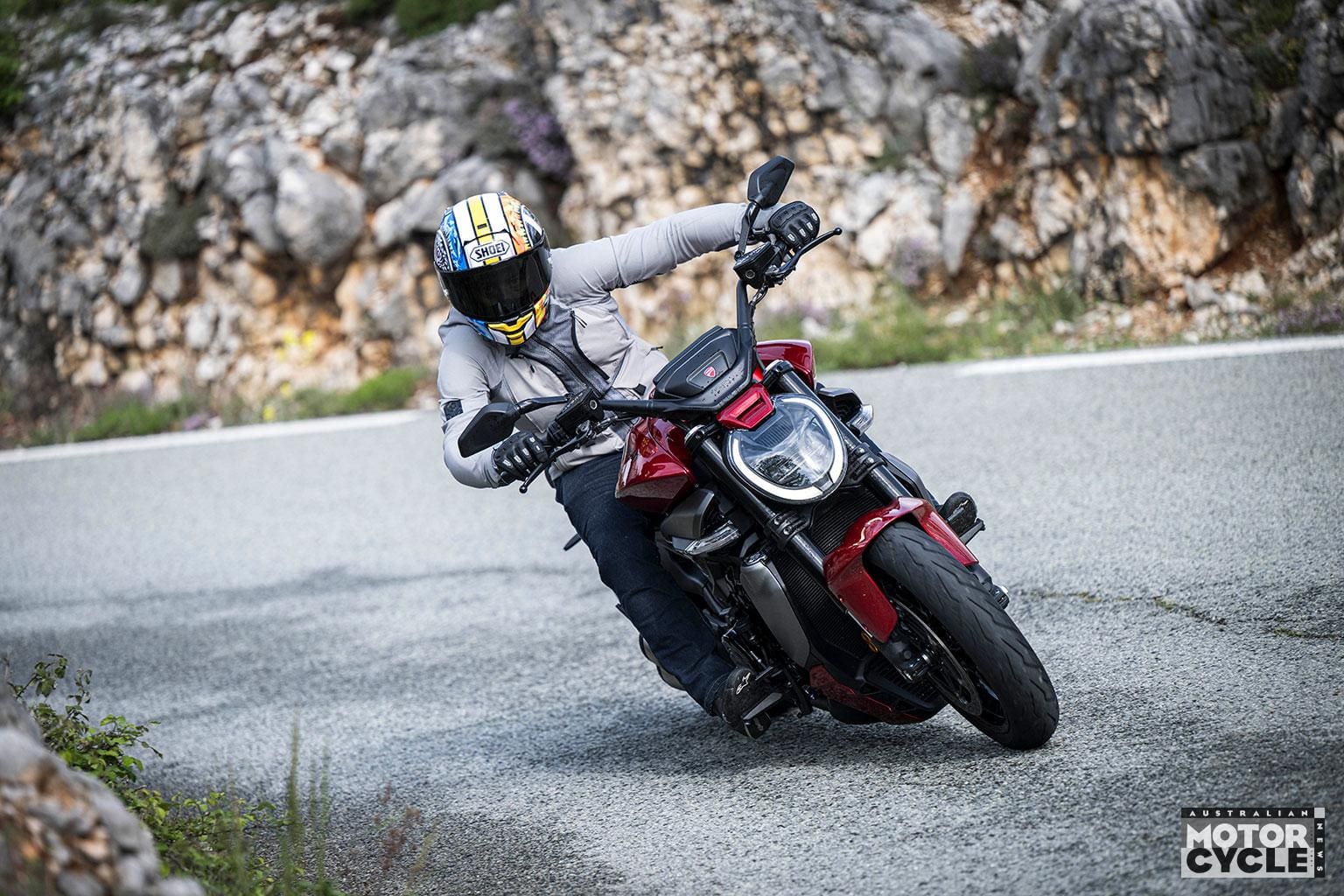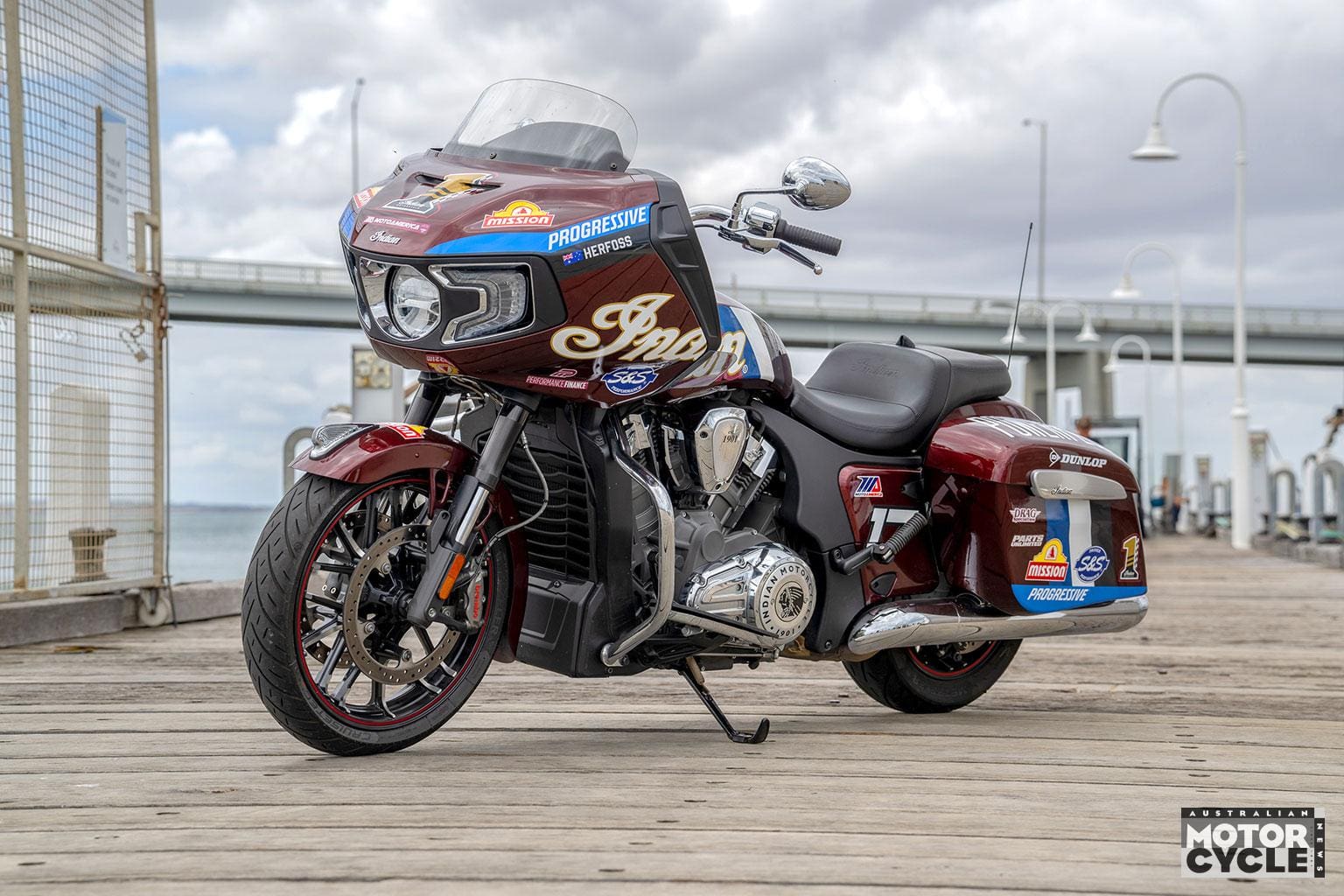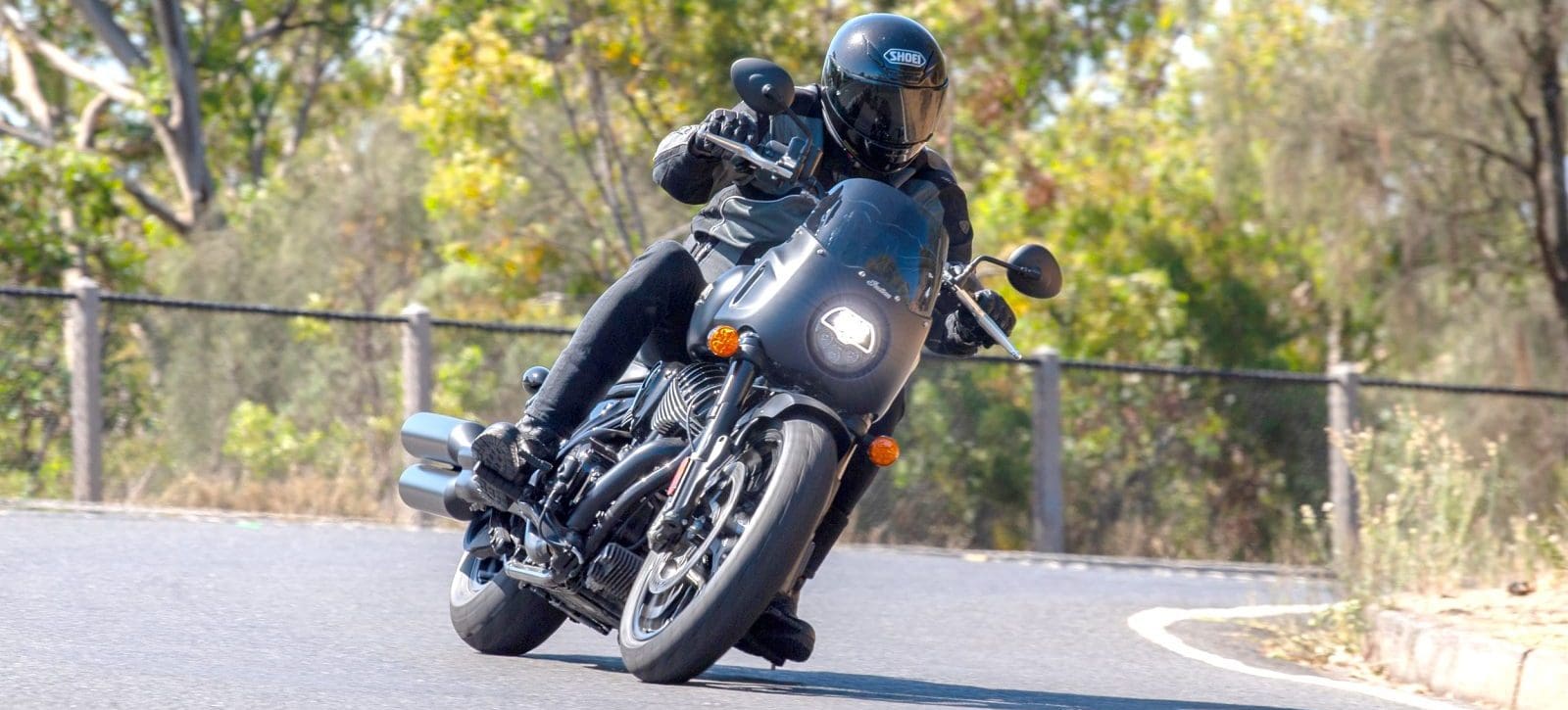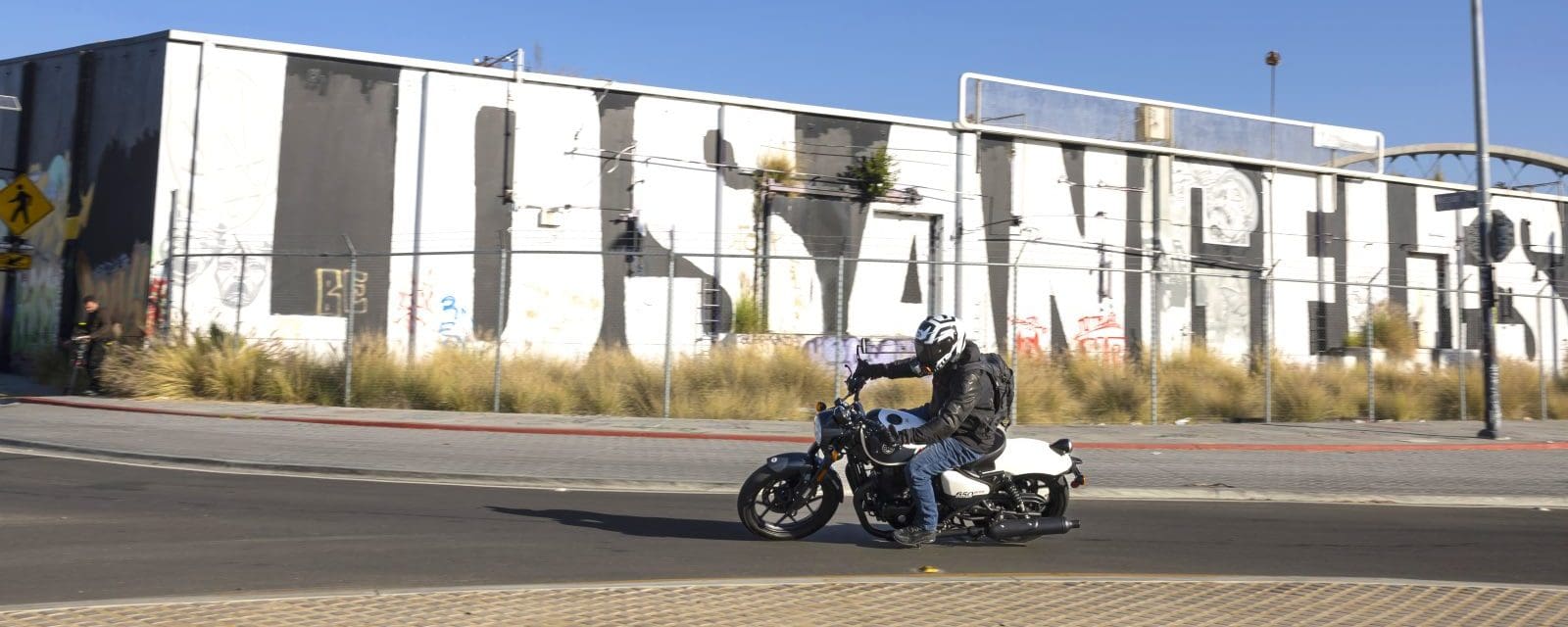For three hours I’d been battling my way through Sydney traffic, the first couple of those heading north in pissing-down rain on a small and light single-cylinder nakedbike on the way to Harley-Davidson’s Sydney HQ, and the third heading back south to the Illawarra under clearing skies on the new Harley-Davidson CVO Road Glide… which is anything but small, light or naked. Of course, the lane-splitting antics on the trip north could not be repeated on the ride south, but with damp jacket and jeans, I was thankful for the Road Glide’s generous fairing (and its heated grips) even if it meant that most of the gaps in traffic were too tight to squeeze through.
I was also thankful for the CVO Road Glide’s pleasant low-speed manners and its low seat height. Sure, it weighs in at almost 400kg ready to ride, but most of that weight is down low and as a result it feels surprisingly agile and well balanced at slow speeds, allowing for easy cornering and fuss-free feet-up U-turns. But it’s once you escape the urban jungle and the tin-tops begin to thin out that the CVO Road Glide is truly in its element.

The CVO Road Glide, along with its sibling the CVO Street Glide, is the latest offering from Harley-Davidson’s Custom Vehicle Operations, and it packs the biggest and most torque-laden V-twin in the H-D catalogue. A huge 121 cubic inches in a grand tourer that tips the scales at 391kg ready to ride. It is a limited-edition model with a hefty price tag of $62,495 ride away.
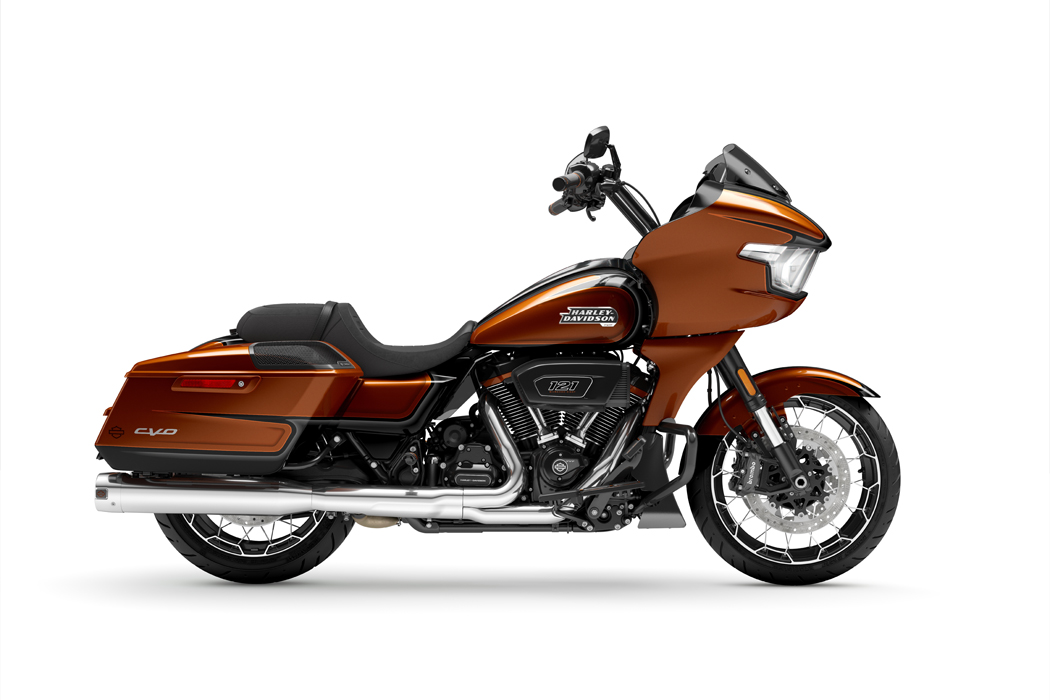
Rather than take the freeway down to the Gong, I peeled off onto the old Princes Highway, eager to see how much muscle would be required to punt this generous serving of Milwaukee metal through a series of familiar lefts and rights. A few hundred metres before the bends, I cracked the throttle open and let the big V-twin do its thing… which is essentially to thrust the CVO Road Glide at the horizon in whatever gear it’s in, without raising a sweat. With a stonking 183Nm torque peak, the Road Glide rarely needs a downshift to quickly pick up the pace, and in this case it did so much quicker than I expected, momentarily tempting me to grab a handful of front Brembo before I hooked into the first corner but instead I just dabbed the rear brake, hung off the side in a vain attempt to impersonate a King of the Baggers racer, and waited for the inevitable footboard grounding.

And yes, while the CVO Road Glide will drag its footboards without too much effort, it has more cornering clearance than you might expect (a claimed 32° of lean angle) and as a result you can push it through a series of sweeping bends at a decent clip. Tipping into a corner requires much less effort than expected; just a gentle nudge on the wide ’bar is enough to have it cranked over on its side, and once there it holds its line nicely… so long as the road surface is relatively smooth.
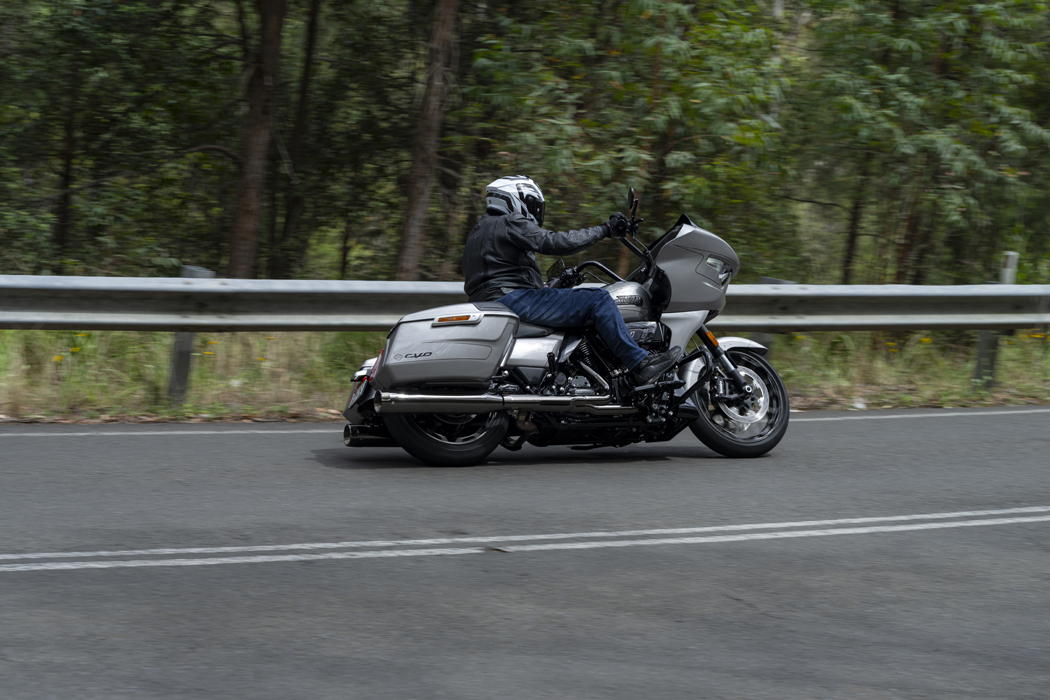
The Showa 47mm USD fork might not offer anything in the way of adjustment, but it feels well sorted for a variety of conditions and handles uneven surfaces with a minimum of fuss, with minimal deflection over big bumps, while dive when braking is also well controlled. The dual-shock setup at the rear, however, can feel harsh by comparison; the right shock has threaded preload adjustment to make big changes to suit different loads, and can only be accessed by removing the right-side pannier, while the left shock has an easy-to-access remote adjuster for finer preload tweaks that a rider might make depending on road conditions. While it’s certainly not the worst cruiser rear-end I’ve sampled, with just 76mm of travel there’s only so much the CVO Road Glide can do when it comes to soaking up the big hits.

With twin 320mm floating discs up front gripped by Brembo four-piston radially-mounted monobloc calipers, there’s plenty of stopping power on offer. The brake system is linked, and it also features cornering ABS, inspiring confidence when braking hard and late into corners. But when you’re not pushing hard and you just want to brush off a little speed, or adjust the Road Glide’s line mid-corner, the rear brake is the one to go to, and its huge car-like brake ‘pedal’ is perfectly positioned for easy access.
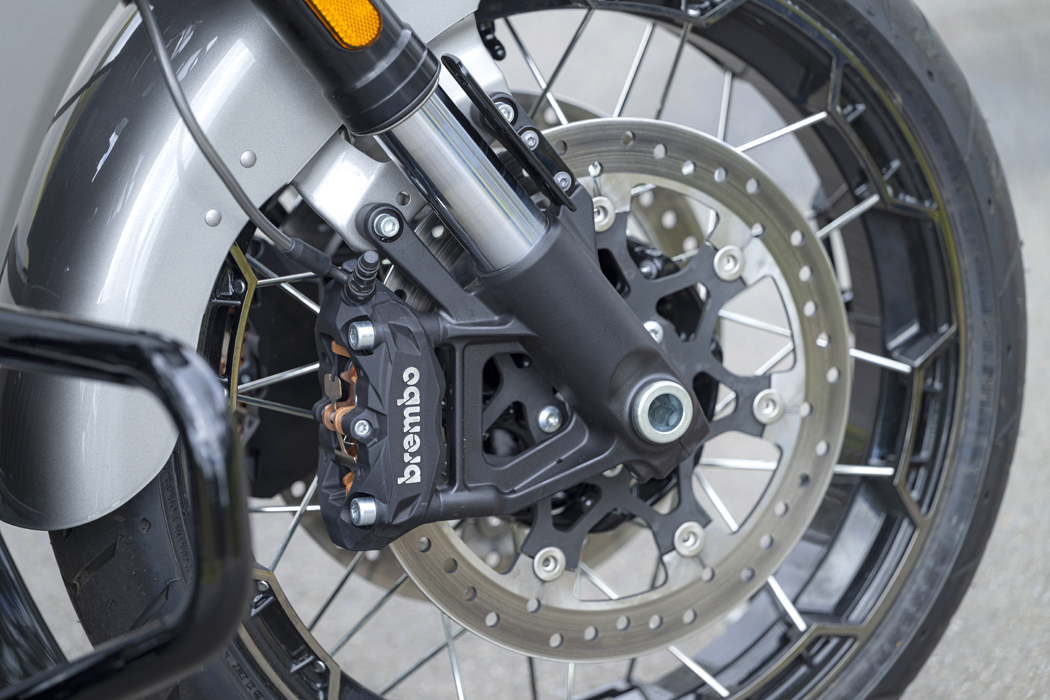
But forget cornering and braking; the real fun on the CVO Road Glide happens when you twist the grip exiting corners, riding the V-twin’s tsunami of torque, and knowing a comprehensive suite of clever electronic rider aids have got you covered if you let loose too much mumbo. Those rider aids include cornering traction control, cornering drag slip control and linked cornering ABS. The CVO also offers a wide array of selectable and customisable ride modes including Rain, Road, Sport and Custom A and B, all designed to help you get the most out of that monstrous 1977cc water-cooled V-twin that punches out a claimed 86kW (115hp) of power at 5020rpm overshadowed by a stump-pulling 183Nm of torque at just 3500rpm.
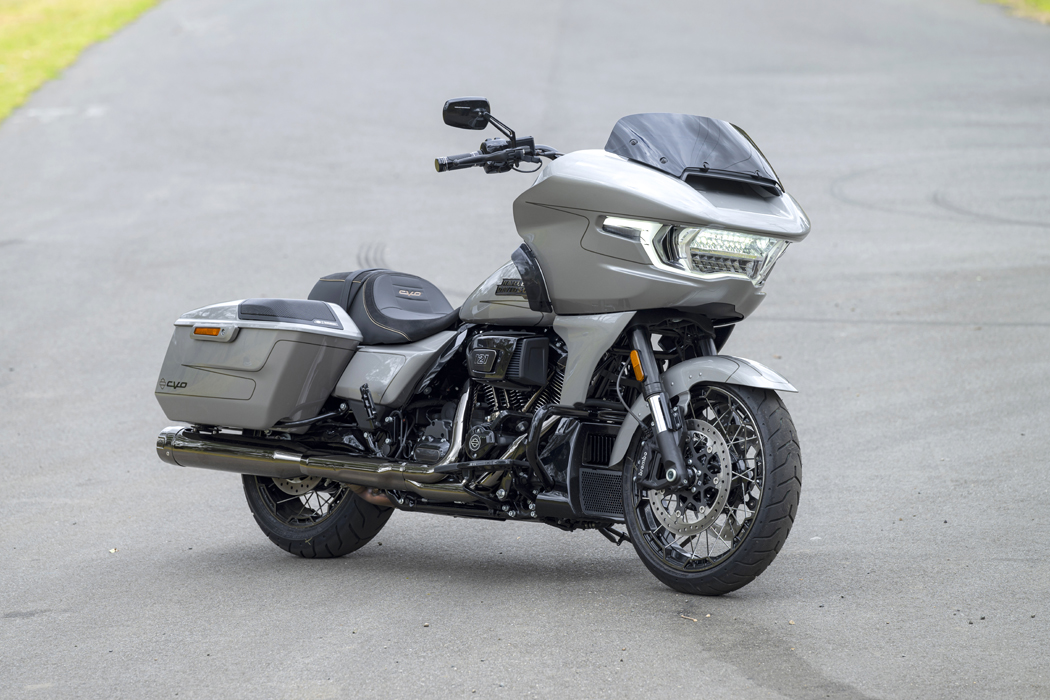
There’s no doubt the 121c.i. V-twin is the jewel in the CVO crown, producing effortless acceleration that belies the bike’s size and weight, and while it might be an ‘old school’ OHV design, it’s a seriously high-tech one (see boxout: ‘Milwaukee-Eight VVT 121 Engine’), with liquid cooling, variable valve timing and Euro 5 compliance. Although heavily muffled, the exhaust note is deep and gruff, and coaxes you to wind on the throttle at every opportunity.
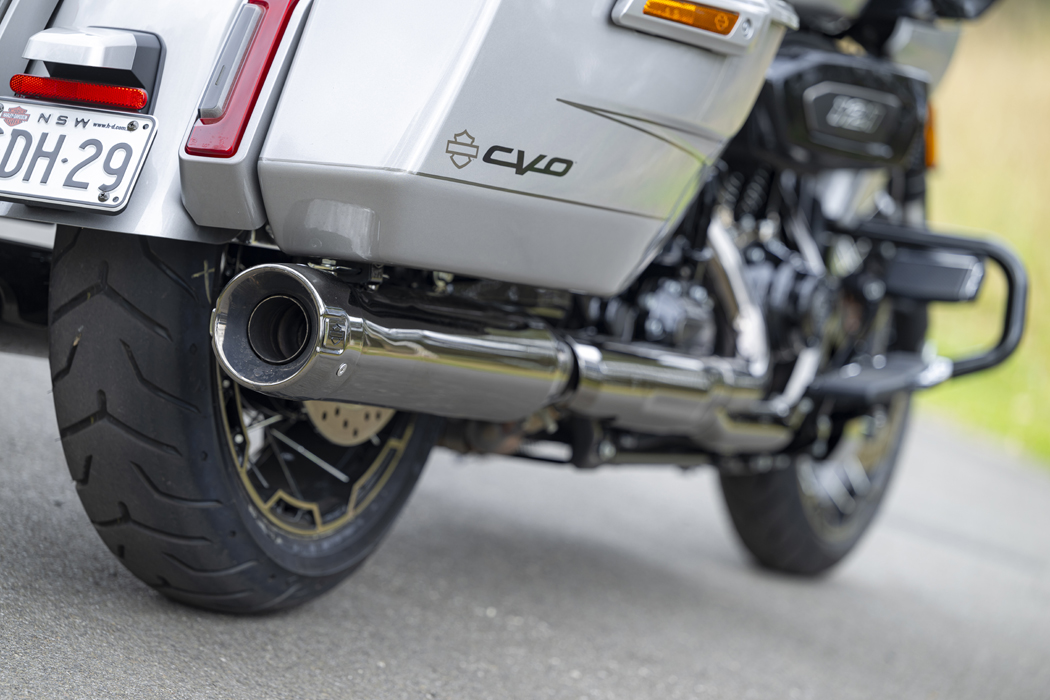
The six-speed gearbox can feel a bit clunky but it delivers positive shifts and I never once found a false neutral. And selecting neutral has been made easier than on the previous 117 model thanks to a revised shift drum with a ‘redesigned neutral pocket geometry’. The cable-operated clutch feels quite heavy and unlike the front brake there’s no adjustment at the lever, but it has a smooth and progressive engagement.

There’s a button on the right switchblock for ride mode selection, which is then clearly displayed on the massive 12.3-inch full-colour TFT display. Each ride mode provides a specific combination of power delivery, engine braking, cornering ABS and cornering TC settings. Road mode, for example, has a less aggressive throttle response than Sport mode and a higher level of ABS and TC intervention. In Sport mode, full power is available, and the quickest throttle response is provided, TC intervention is at the lowest level and engine braking is increased. Conversely, Rain mode tones down throttle response and power output while upping ABS and TC intervention.
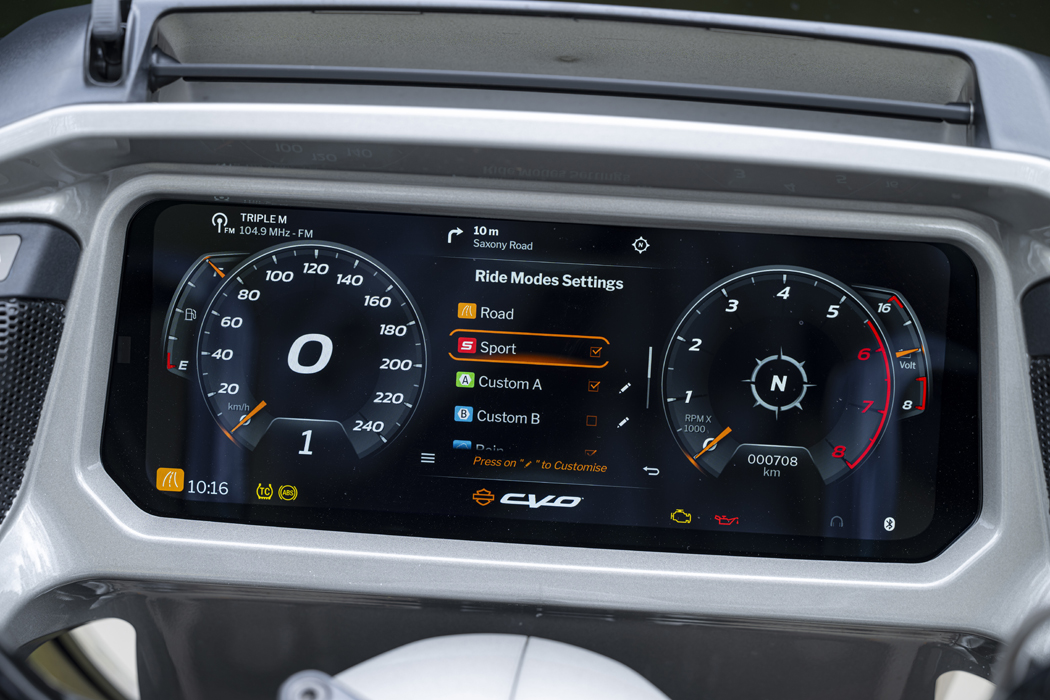
The two Custom modes allow riders to set their own combination of torque delivery characteristics, engine braking, throttle response, and ABS and TC intervention.
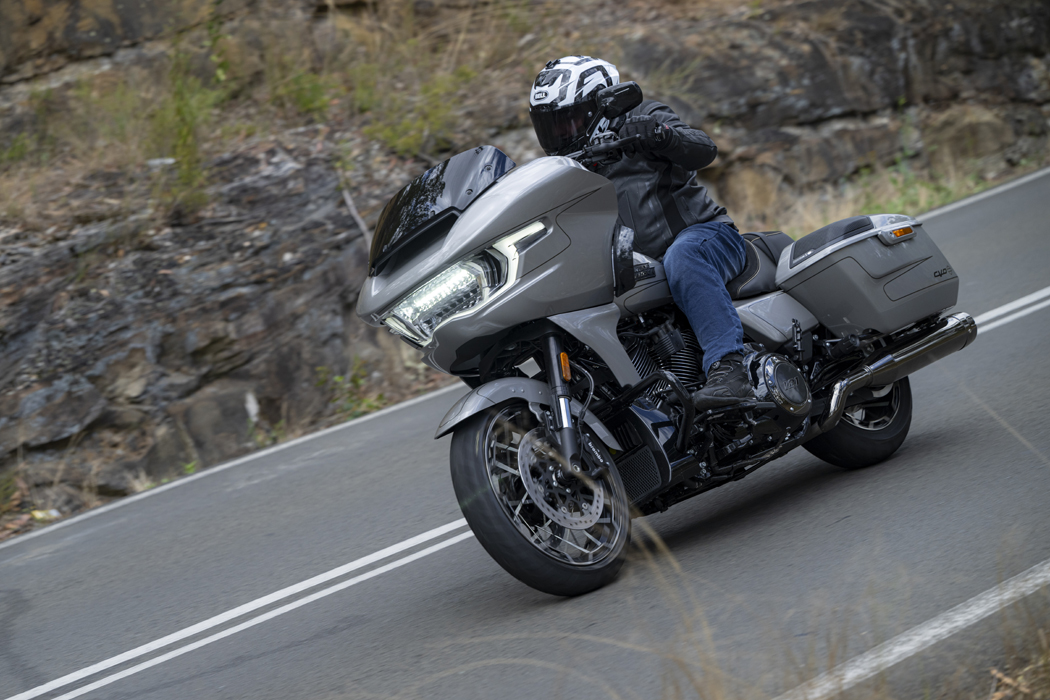
As mentioned, the CVO runs a huge TFT screen that clearly displays just about every conceivable bit of information you could ever require. In the Cruise display, it shows large analogue-style speedo and tacho, and fuel and engine-temp gauges, along with gear position indicator, odo and ride mode. The Sport display shows a central tacho with digital speedo and more space to display widgets with other information, while the Tour display shows a centred satnav map and turn-by-turn navigation when Apple CarPlay is enacted.
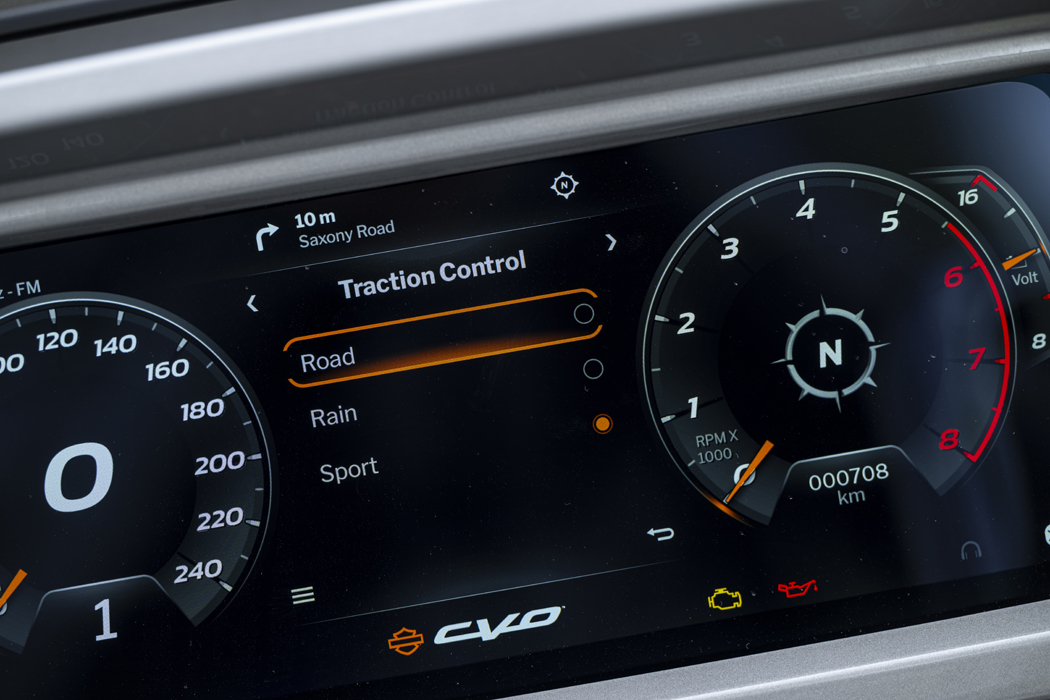
The big digital display has a touchscreen that can be operated while wearing gloves. While full Android Auto connection is not yet available, Harley says it’s not far off; in the meantime, those with an Apple iPhone can connect CarPlay wirelessly or via a USB-C cable, the latter located in one of two small storage bins (the right-side one) in the fairing. For those with a wireless headset, there’s Bluetooth connection for phone and audio, and for those without there’s an impressive four-speaker Rockford Fosgate 500W sound system. And when I say impressive, I mean bloody loud, with fantastic audio quality that makes music perfectly audible through a full-face helmet at highway speeds.
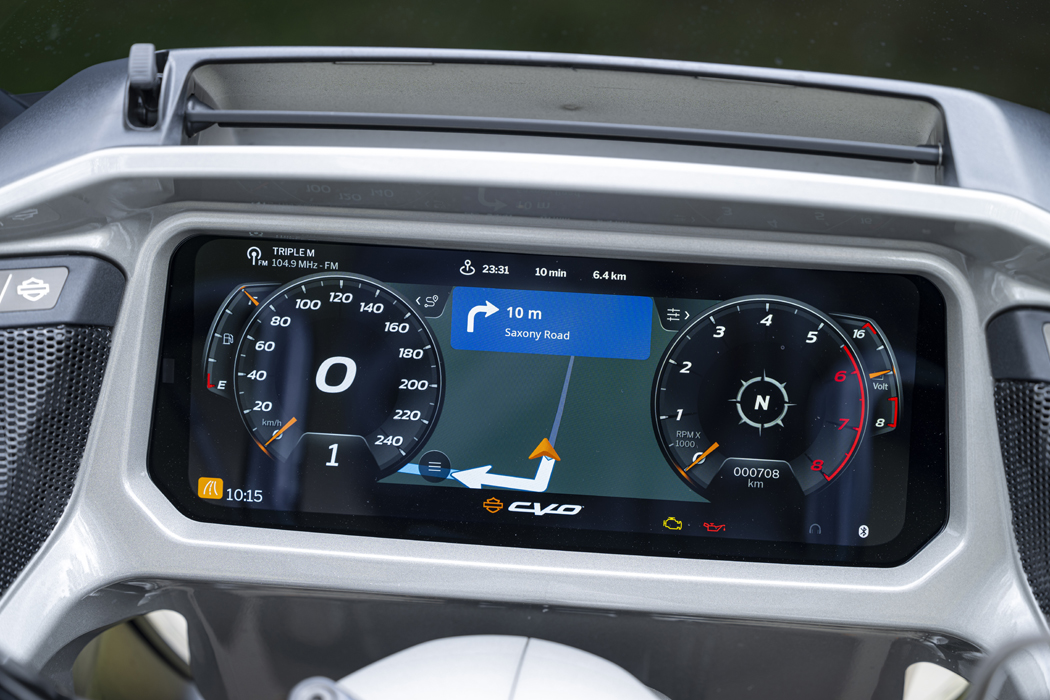
Overall gearing is tall and the V-twin ticks over at around 2250rpm in top gear at 100km/h; as a result, the CVO Road Glide is more economical than you might expect. Harley claims a combined-cycle fuel consumption of 5L/100km, and on test we bettered this recording 4.6L/100km, which means you could theoretically get a touring range in excess of 450km from the 22.7L fuel tank.
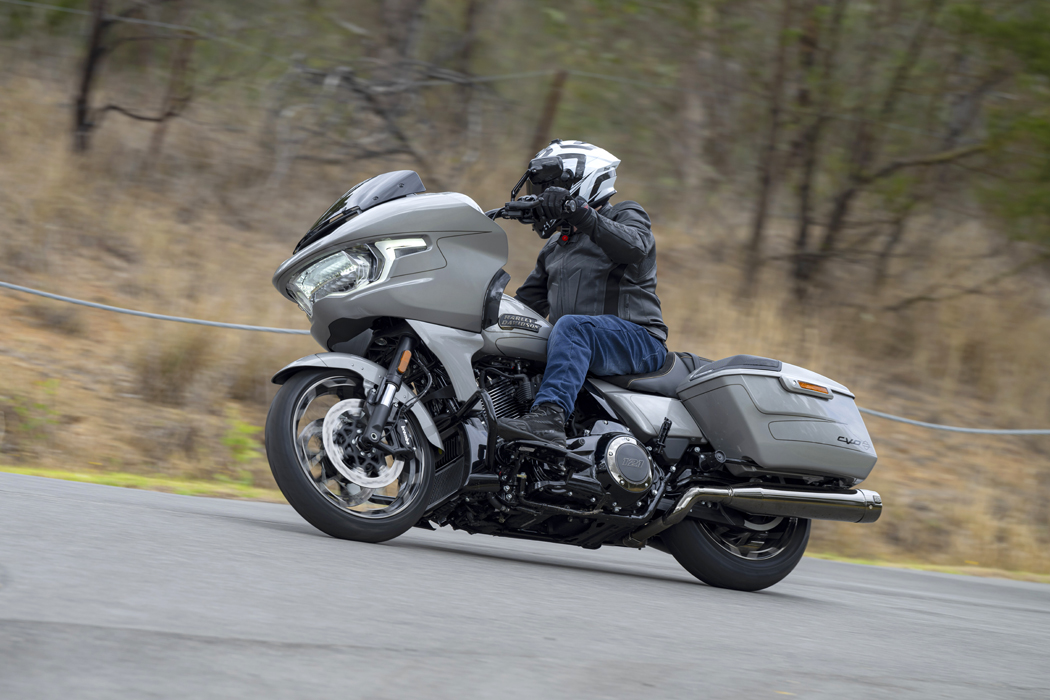
As you would expect of a grand tourer like the CVO Road Glide, ergonomics are spot-on for big miles in the saddle and the handlebar is adjustable through a range of 27 degrees, so most riders should be able to find a comfortable setting. The seat is wide and well padded, the reach to the handlebar places you in a neutral riding position and the big footboards allow you to move your feet around. As mentioned, the rear brake pedal is well positioned, but I didn’t like the position of the heel-and-toe gear lever, and other than sampling it a couple of times, I gave up on using the heel shifter as I felt it was set too high.
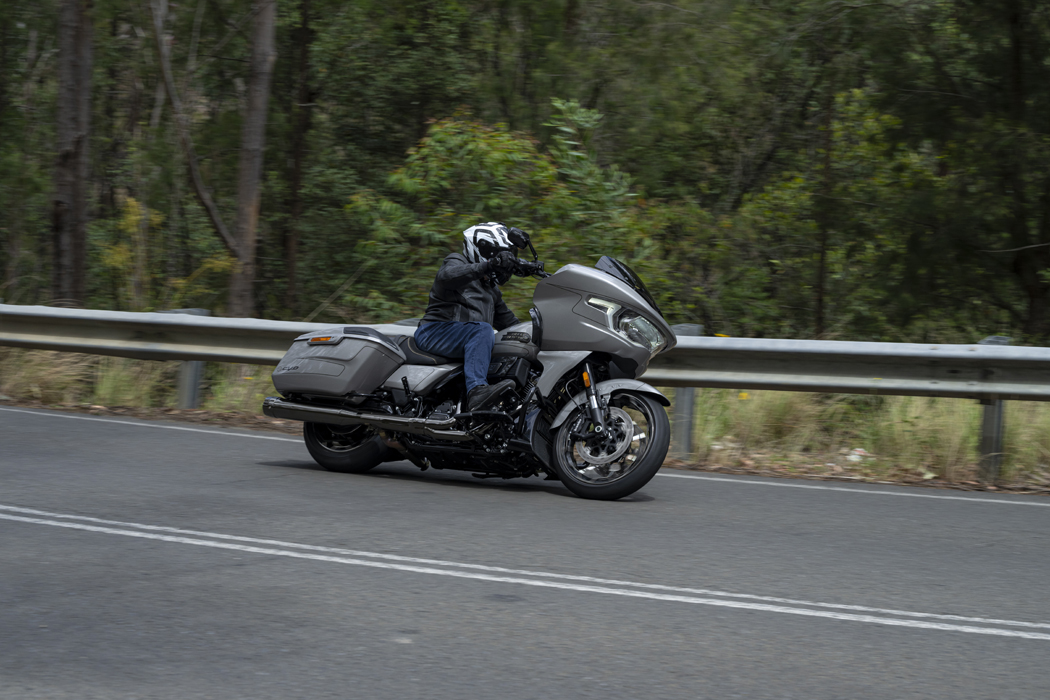
The Harley designers obviously put a lot of work into ensuring the CVO Road Glide’s fairing provides the ideal combination of wind protection and cooling. There’s an adjustable wind deflector just below the screen and no matter what your height, you should be able to find a setting that will virtually eliminate buffeting around your helmet. There are also adjustable wind deflectors just in front of your knees that can be set to keep wind off your legs or to allow for ample airflow when desired. All are easy to adjust while riding and all are very effective.
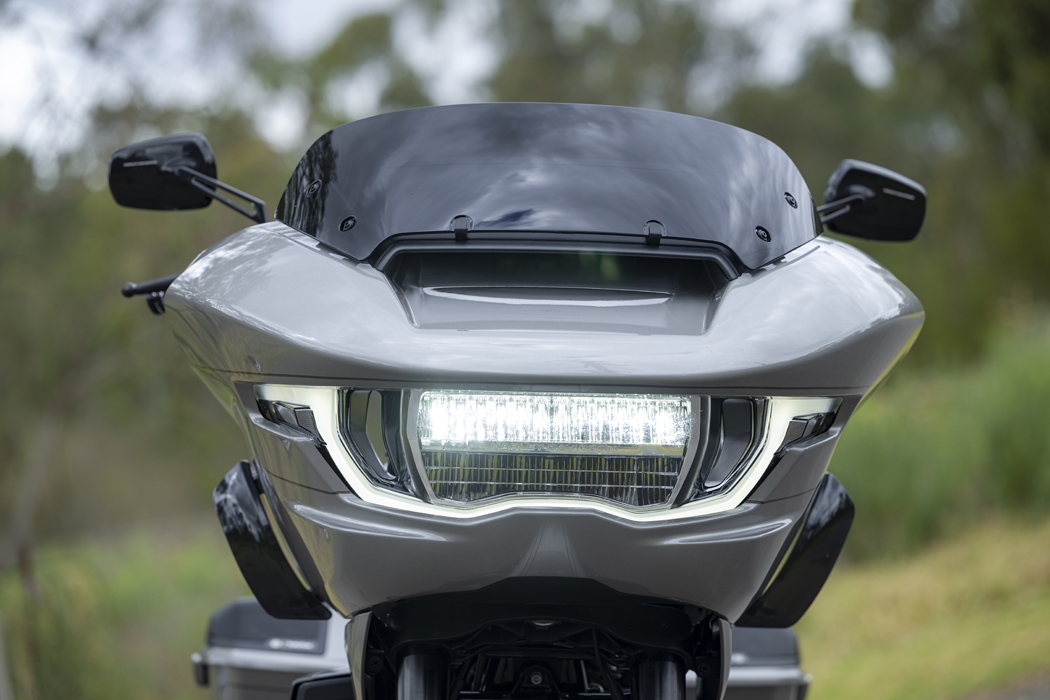
Also noteworthy are the heated grips, which are operated and adjusted via a button on the end of the left grip; it’s such a simple and easy to use setup you’d think that all other manufacturers would follow suit.
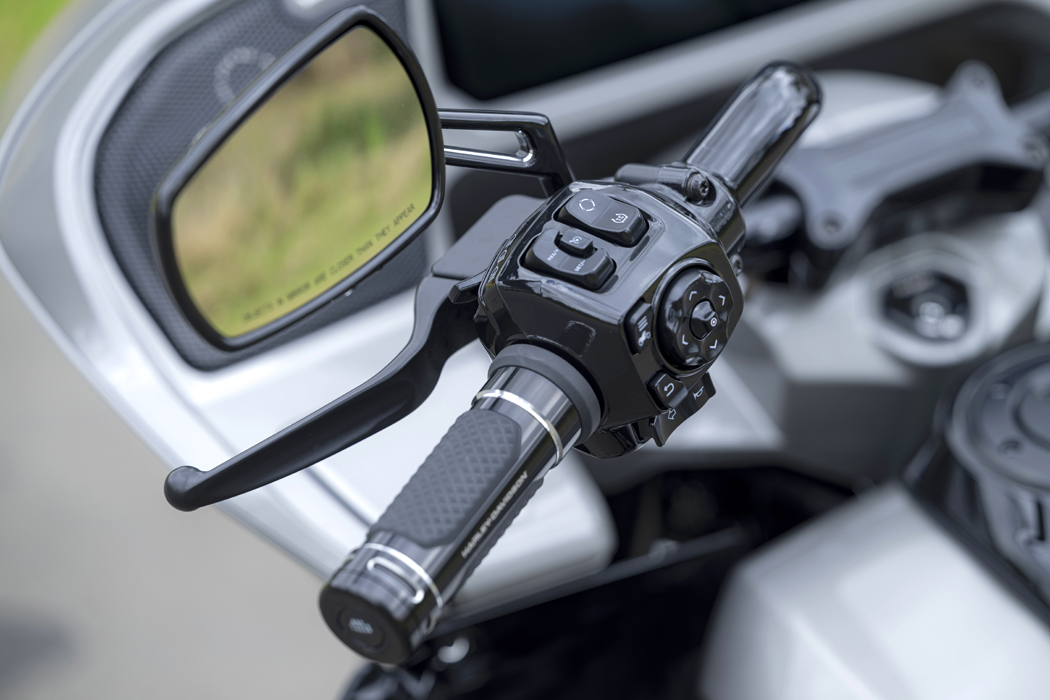
The panniers are nicely integrated into the design of the Road Glide with flowing lines that match the rear guard, and their width is around the same as the handlebar, making it easy to calculate what gaps you’ll be able to squeeze into when riding around town. They offer ample luggage space and feature a simple lever that allows you to lift the lid of each, the underside of which are home to the rear speakers, which don’t consume too much of the available luggage space. The panniers can be locked/unlocked using the key fob. The pillion seat is small compared to the rider’s comfy pew but it’s well-padded and the footpegs are situated at a comfortable height.
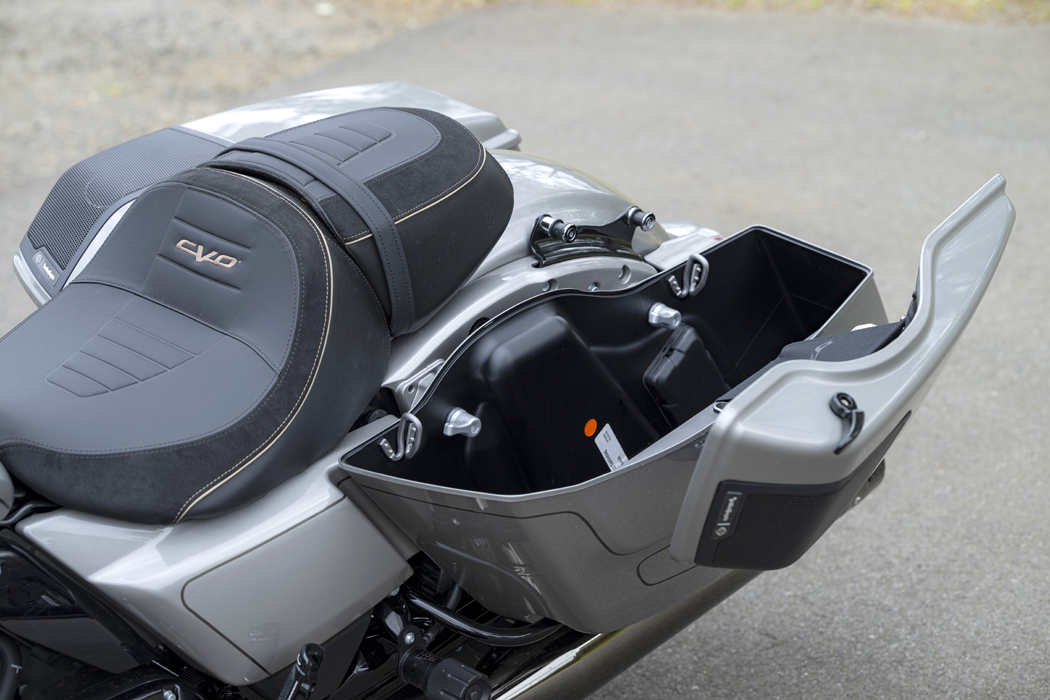
As you’d expect on a bike at this price point, the fit and finish is next level. The paint is deep and lustrous, the chrome bits are faultless and the black bits look glossy and special. The exhaust system has a Scorched Chrome finish and it looks oh so trick… And what about those wheels?! A combination of aluminium rims and laced spokes, which are affixed in such a way that the CVO can run a TPMS (tyre pressure monitoring system).

The CVO Road Glide has a keyless ignition, although you’ll need to pop out the physical key on the fob to operate the steering lock. All the switchgear is quality stuff; sure there are a lot of switches and buttons on both switchblocks, but with a bit of familiarisation it all starts to make sense quickly, and the important switches are clearly marked and straightforward.

The CVO Road Glide is a hell of a lot of motorcycle, but it’s also a bloody expensive one at $62,495 ride away. It will only be imported into Australia in limited numbers and, according to H-D, most examples have already been accounted for, so if you simply must have the latest CVO model with the biggest Milwaukee-Eight V-twin engine around, you’d best get your chequebook out pronto.
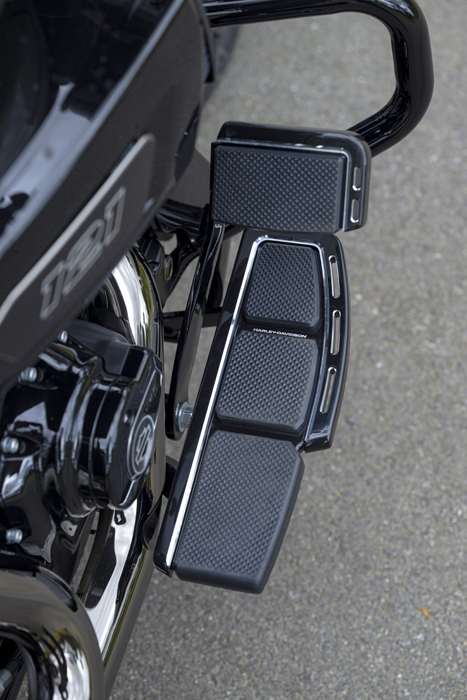
Whether the CVO Road Glide is good value for money depends entirely on where your priorities lie, but I do need to point out one notable omission. I reckon any bike that weighs close to 400kg should be equipped with a reverse gear; sure, the CVO Road Glide is manoeuvrable at low speeds, but once parked and needing to be pushed around in tight spaces like, say, your garage, or if you park it pointed downhill towards a kerb and you need to back it up, you’re going to struggle.

Of course, if you put a bit of forethought into parking, you’ll be able to get by without reverse… and if big open-road miles are your thing and you simply must have the latest, greatest and most exclusive Harley, then this example is one of the finest (a lot of) money can buy.
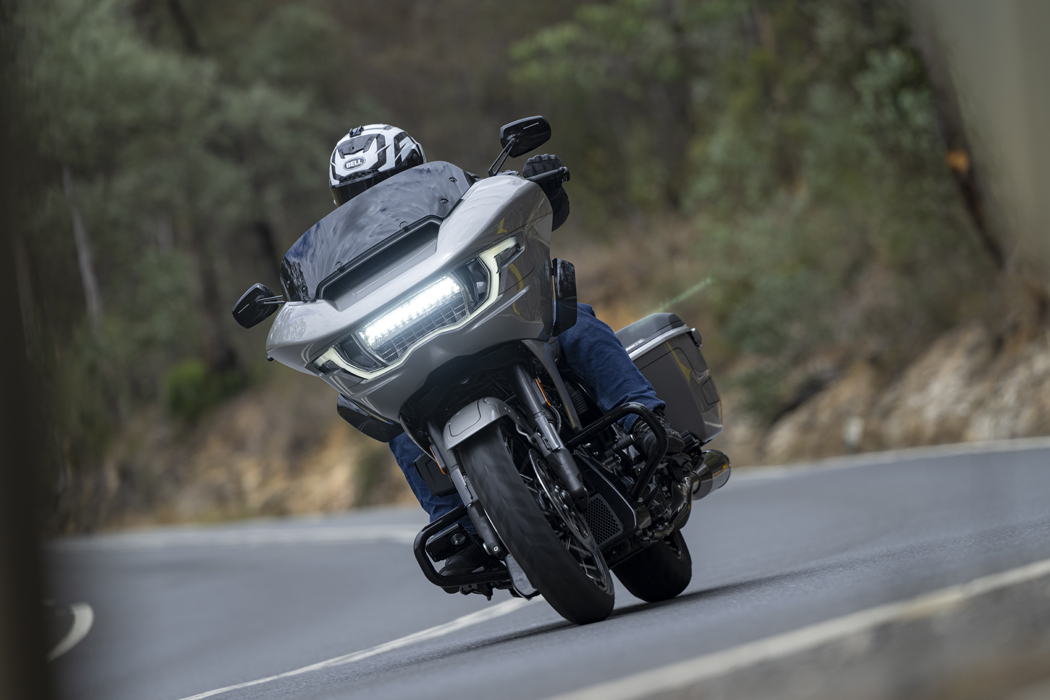
Test Dean Mellor + Photography Incite Images

